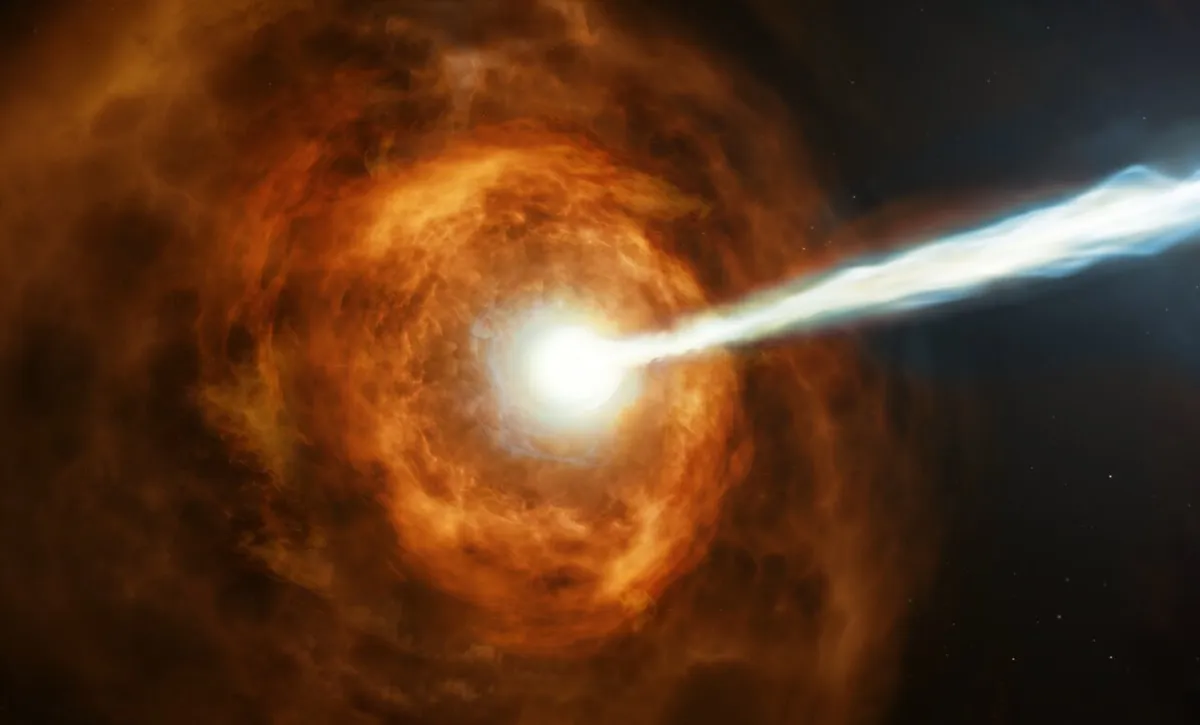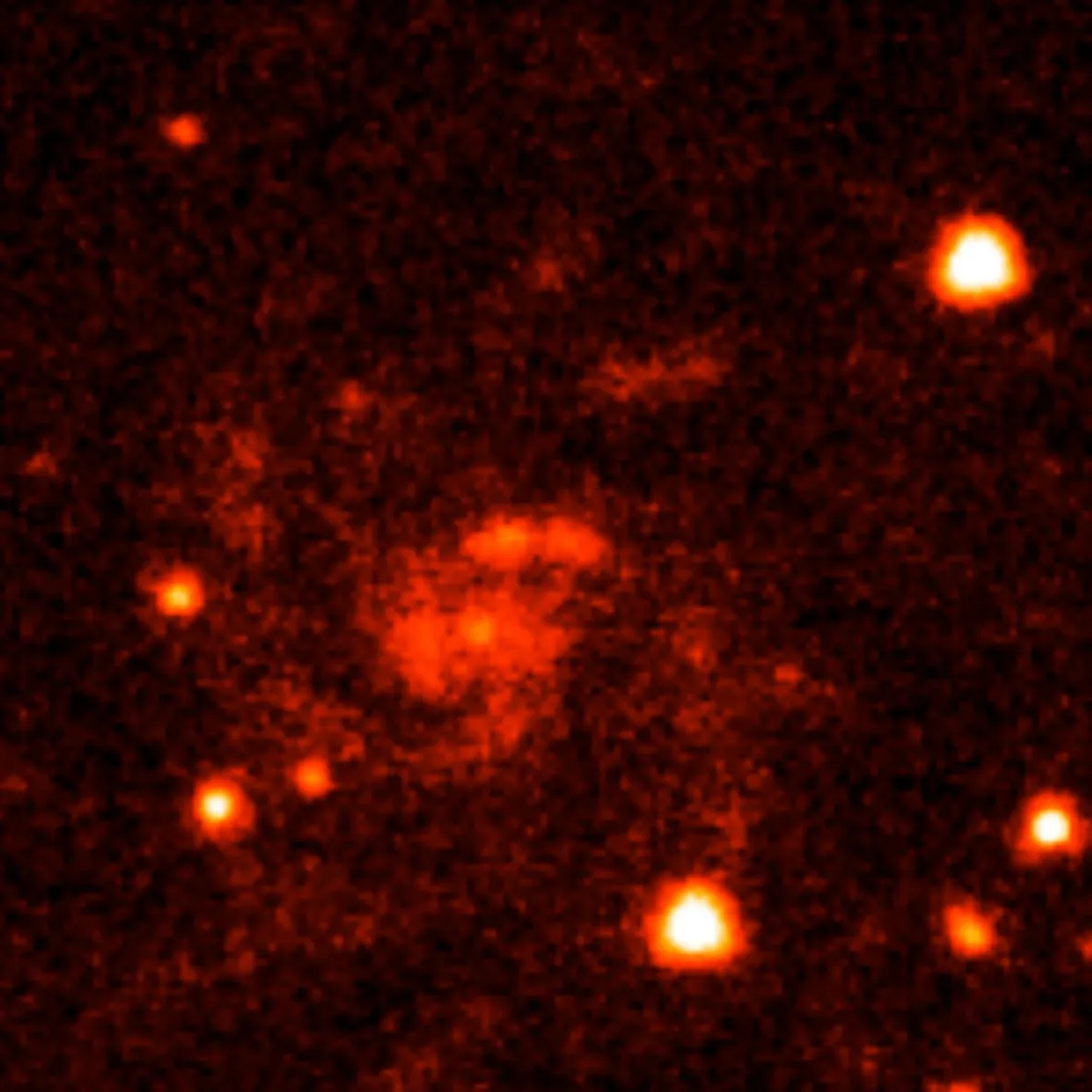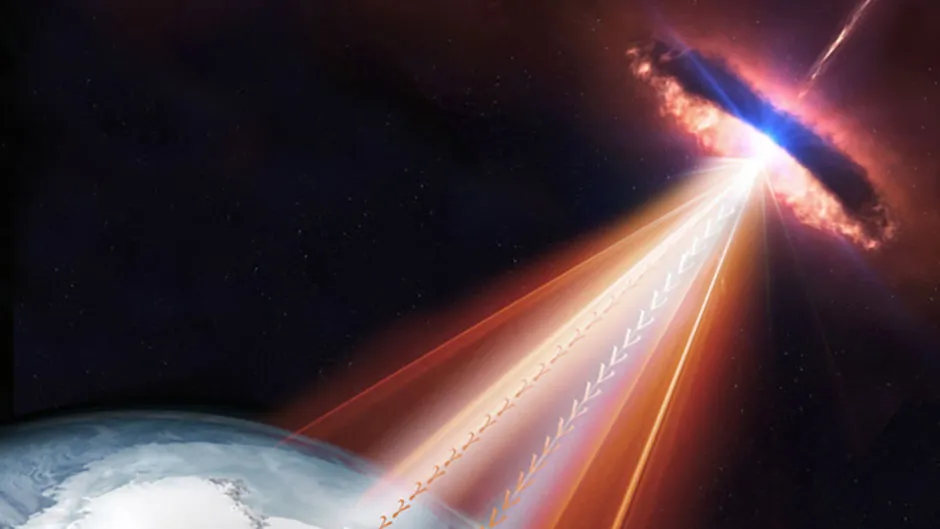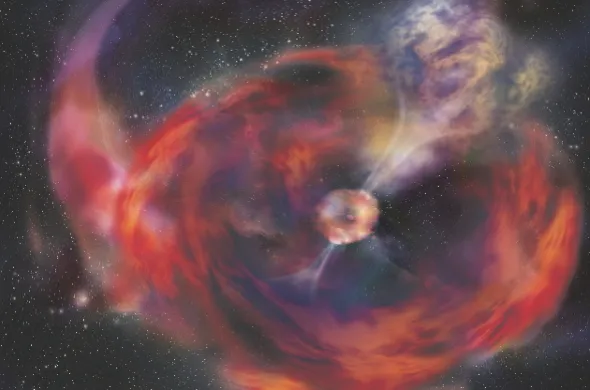When looking at the explosive Universe there is a phenomenon that stands out head and shoulders above the rest.
It is so powerful that in a few seconds it gives out orders of magnitude more energy than the Sun will emit in its entire lifetime.
It is so bright that all the ones we have observed to date have been located in other galaxies.
The majority of the radiation released in this type of explosion is in the form of the most highly energetic wave in the electromagnetic spectrum – gamma rays.

I am talking about gamma-ray bursts. But what are these incredibly bright events?
How do gamma-ray bursts occur in massive stars when they die? The answer could tell us more about how galaxies – and even life – evolve.
We spoke toDr Elizabeth Stanway, an extragalactic star modeller at the University of Warwick, to find out more about these incredible events.
What is a gamma-ray burst?
When a massive star exhausts all of its fuel, it collapses under its own weight and dies in a supernova. When the star is very, very massive and is spinning rapidly at the same time as collapsing, it forms a black hole at its core and sends out jets of energy.
A gamma-ray burst occurs when a very massive star collapses like this and we are looking along the line of the jet.
We’ve got this beam of radiation pointing directly at us. It is tens or hundreds of times brighter than a normal supernova. GRBs can outshine entire galaxies.
What are the key questions about how gamma-ray bursts form?
The big question has been how you get a star that is that big and is still spinning really fast when it dies. The work I have been doing with my colleagues Ashley Chrimes and Dr JJ Eldridge has been to model this as a form of binary star interaction.
It’s saying the reason these massive stars are still spinning so fast when they collapse is because the companion star is stopping them from slowing down – it’s spinning them up over time.

How do you study gamma-ray bursts?
We have a set of stellar evolution models, which include the idea that stars could be transferring material from one star in a binary to a companion.
A normal star will blow out winds and material off its surface over time, reducing its rotation.
But if that material is preferentially going to a neighbour, and that is exerting a tide on the star, then it will get that star spinning faster again.
We’ve calculated the effects of tides in these binary systems – it’s the same effect the Moon has on the Earth and its oceans.
We were also looking specifically at binary stars. Given what we know about the prevalence of binaries and how stars are formed in the history of the Universe, does this set of models confirm observations?
It was consistent; our model could explain the data.
What was the key result?
We have a quarter of a million individual stellar evolution models, and for each one we can determine what’s going to happen at the end: maybe only about 20,000 of them will explode.
We looked to see whether the tidal effects in binaries were more or less likely to make these stars explode as GRBs.
The key thing is that until now, the previous models we had that keep these stars spinning only worked when we had metal-poor stars.
Our model, with the tidal effect, allows this spinning to happen in stars with higher levels of metals. It explains some of the observations that have suggested that these events are happening in galaxies quite rich in metals.

What are the wider implications of your study?
A very small fraction of stars become GRBs, only stars more than about 20 to 25 times bigger than our Sun do this.
Though extremely rare, when a GRB goes off it irradiates a very large volume – so they affect nearby stars and they can certainly affect any potential life in neighbouring star systems.
Studying these systems may be important, as it helps us understand the areas in the Universe where life could potentially survive rather than being wiped out; you really don’t want to be near a GRB.
Although we now live in a fairly quiet planetary system, on the edge of a fairly quiet Galaxy, in the past the Universe was forming stars at a much higher rate and these massive stars were impacting their surroundings in many ways.
They were driving radiation and blowing gas and dust out of entire galaxies with the force of their radiation and supernovae.
So our research into the lives and deaths of these stars is important for our understanding of how galaxies have evolved over time.
Observing gamma-ray bursts

Words: Maggie-Aderin Pocock
In terms of observation a gamma-ray burst, or GRB, is an incredibly intense flash of gamma radiation.
The shortest last just a fraction of a second, though some can go on for a few minutes and we have even seen some that last for a few hours, though this is very rare.
When a GRB occurs it is one of the brightest things in the sky.
We observe around 100 GRBs a year but, because of their directional nature, this is probably only around 10% of the total that is occurring within our observable range.
After the burst of gamma rays an afterglow is often observed that contains other parts of the electromagnetic spectrum and lasts a lot longer than the initial burst.
Where do gamma-ray bursts come from?

There has been some debate as to what causes GRBs. Short-lived ones are thought to be caused by collisions between massive objects such as neutron stars or black holes.
Longer-lived bursts (two seconds or longer) are thought to be from the collapse of stars with 30 or more solar masses.
These collapses have sometimes been associated with supernovae, but there is only limited evidence.
When observed in distant galaxies, though the gamma-ray bursts may be clearly visible, any accompanying supernova would be much dimmer, meaning it is rarely detectable over the distances involved.

The GRBs that have been observed have all been far from our Galaxy, and as a result the light has taken a long time to reach us.
These explosions took place when the Universe was very young, around four per cent of its current age.
As a result we are looking at the demise of objects that were some of the first stars formed in our Universe.
GRBs are so bright that they excite the matter surrounding these early stars. As we develop more sophisticated detection equipment, GRBs will give us insight into the environment that the early stars were created in.
Are gamma-ray bursts dangerous?

The fact that we have only detected gamma-ray bursts beyond our Galaxy is actually a comfort.
Due to the energies released, if one did erupt in our Galaxy the levels of radiation could have an impact on life on Earth.
Luckily calculations have shown that it is extremely unlikely for one to occur in the Milky Way. The conditions just aren’t right.
In the explosive stakes GRBs are really out there. By looking at these great bright sparks, we may get a better understanding of what it was like in the early Universe.

